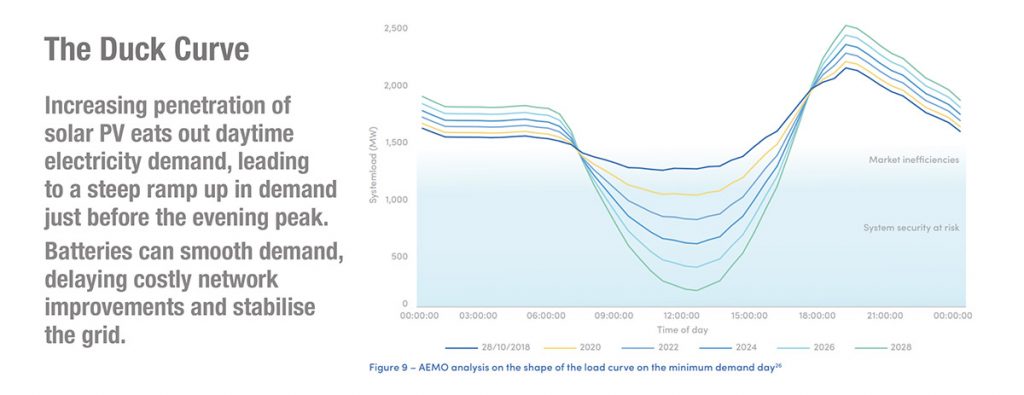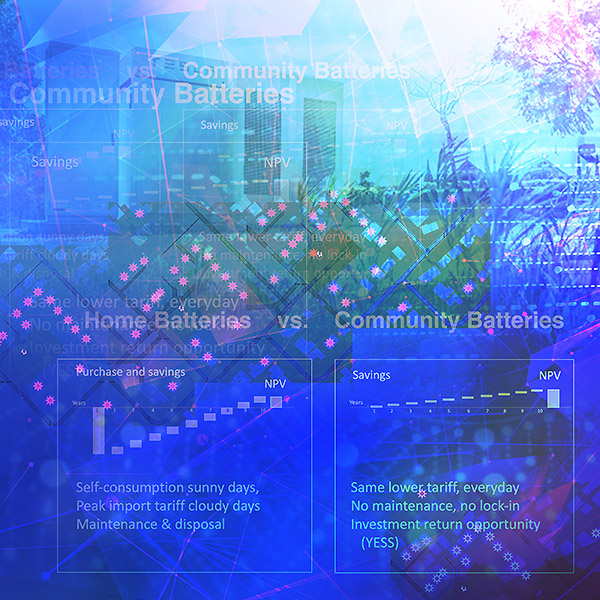At our June 30 meeting, we were pleased and privileged to have Greg Hannan from CitiPower/United Energy and Chris Wallin from the Yarra Energy Foundation (YEF) addressing the role of community batteries and Yarra’s current community battery project.
- A recording of the event may be found here on our YouTube channel.
- Thanks to YEF for the video highlights edit
- Copies of the presenters’ slides can be here, and images of the event here.
- Check out the YEF post on our event.
- Find out more on our Community Battery page where you can sign up for quarterly updates.

This was Lighter Footprints’ first hybrid in-person and online event – all thanks to Daryl Maunder and Mick Nolan who worked through multiple meetings to arrange this new capacity. Thanks also the Energy Transition Group and David Strang for the organising work and for arranging our new community battery information page.
Greg Hannan
Mick Nolan, Lighter Footprints Co-Convenor, introduced our first speaker, Greg Hannan, Head of Network Solutions for CitiPower, United Energy and Powercor.

Greg Hannan explained more about how community batteries can benefit the grid, smoothing local demand, and reducing stress on the network at the evening peak. You can hear his explanation here in our YouTube video.

Greg explained that United Energy was already trialling batteries to manage peak demand. United Energy has two batteries in their pilot project and they performed well last year reducing demand at critical times. Using batteries in this way can delay grid enhancements, reducing customer charges.
Greg also quoted examples of other community batteries elsewhere in Australia.

The Victorian Government has recognised the need for community storage and has launched a neighbourhood battery initiative, with funding to support trials of a variety of different community battery models, to increase understanding of the role that this localised storage can play and its benefits. CitiPower and the Yarra Energy Foundation have proposed a “shovel ready” project for funding.

Chris Wallin
Next up was Chris Wallin, the Community Battery Project Manager for Yarra Energy Foundation (YEF). He outlined in more detail the features and benefits of community batteries, a middle level storage solution that soaks up excess local generation and releases it back when needed, supporting the local grid. Eventually the communities, governments and network providers would see community batteries as a valuable intermediate tier of storage, sitting between large scale solar, and household or EV batteries.
The charts above show the savings that a subscriber to a community battery can achieve compared to the savings that a home battery owner can achieve.
The key differences are as follows. A battery owner has to make an up-front investment, is responsible for maintenance and disposal, has to accept battery degradation and may not end up with a positive NPV. On the other hand the subscriber to a community battery will save money every month and will not have to deal with any of these issues.

Chris Wallin talked to us in more detail about YEF’s collaboration with Citipower/United Energy, the YESS solar sponge project.
The Yess Project is developing a blueprint for community battery projects. The project team is working with CitiPower, a number of retailers and our energy regulators to develop an economic model of a battery that can act as a solar sponge (managing peak flows) while providing further services to the network and storage for subscribers.

Chris also explained the possible impacts of EVs on the network As the uptake of EVs has been so slow in Australia we have yet to see the impact of EVs on the grid. This gives Australia an opportunity. EVs have large storage and can help the grid if charged during the day and exporting to the grid at night. However if owners come home from work and plug in to charge their EVs this will increase demand at peak times putting further strain on the network.
Chris also explained the ideal conditions for a community battery, situated near a reserve, park or community facility in an area with a solar cluster. Citipower has modelled that solar PV uptake is likely to increase from 5% in 2020 to 26% by 2026. Although Boroondara’s uptake is currently lower, the trends will be similar.

Audience Questions
We then ran a Q & A session alternating between questions from the floor and questions from zoom, starting on our YouTube recording here. The questions included a discussion about use for sports clubs, pricing tiers, amount of local solar needed, interface with EVs and more. The speakers provided answers where they could although some of the answers are still subject to confidentiality provisions.

We will take the questions and answers from the meeting and will use these in a Q&A section on our community battery webpage. This will be available soon.
Questions to Audience
The Energy Transition Group is seeking further feedback on these questions, which will help form the basis of an upcoming FAQ post on community batteries.
- Based on what you have heard tonight, what do you think will appeal to the community, and what issues need to be addressed?
- Assuming an attractive community battery service offer, what would need to happen in Boroondara to make it a reality?
- Where do you think a community battery would be ideally located – proudly on display eg in a park or community centre, or hidden away in a reserve or sub-station?
- What would motivate you to participate in a community battery initiative?
- Would you be willing to participate in a community battery initiative if you did not directly benefit but there were overall benefits for the community?
You are welcome to provide your ideas or put forward further questions you may have in our 3 minute survey here, or contact David Strang directly by email on dnstrang@gmail.com or by phone on 0405 506 275.
Further Information
For links and more information please visit our new community battery information page, where you can sign up to quarterly email updates, or look at our community battery explainer here.
You can watch our YouTube video with handy chapter points to hear our speakers and audience questions again, or view the presenters’ slides here,
If you are interested in clean energy please visit our Energy Transition Group page – new members are welcome.

